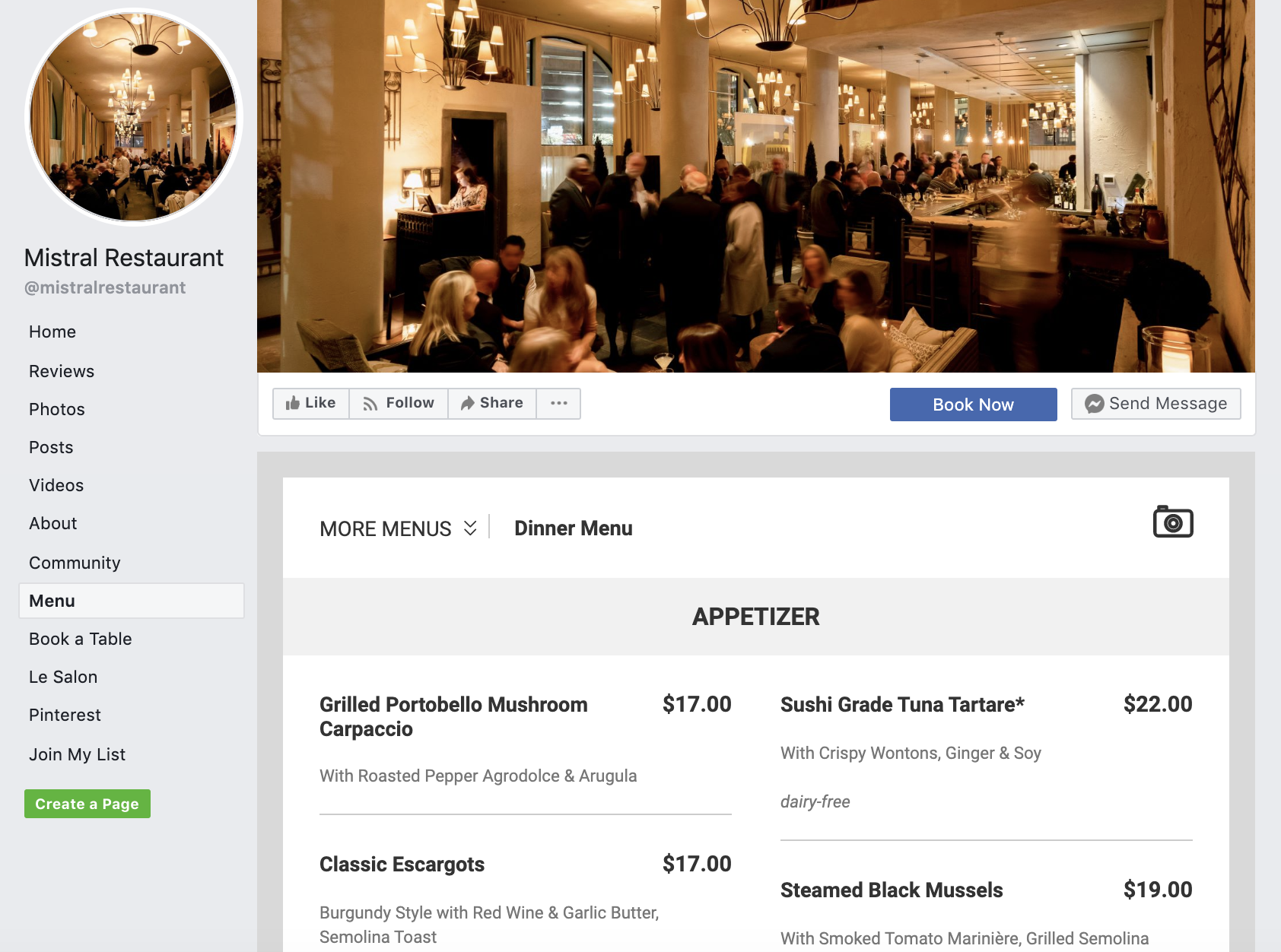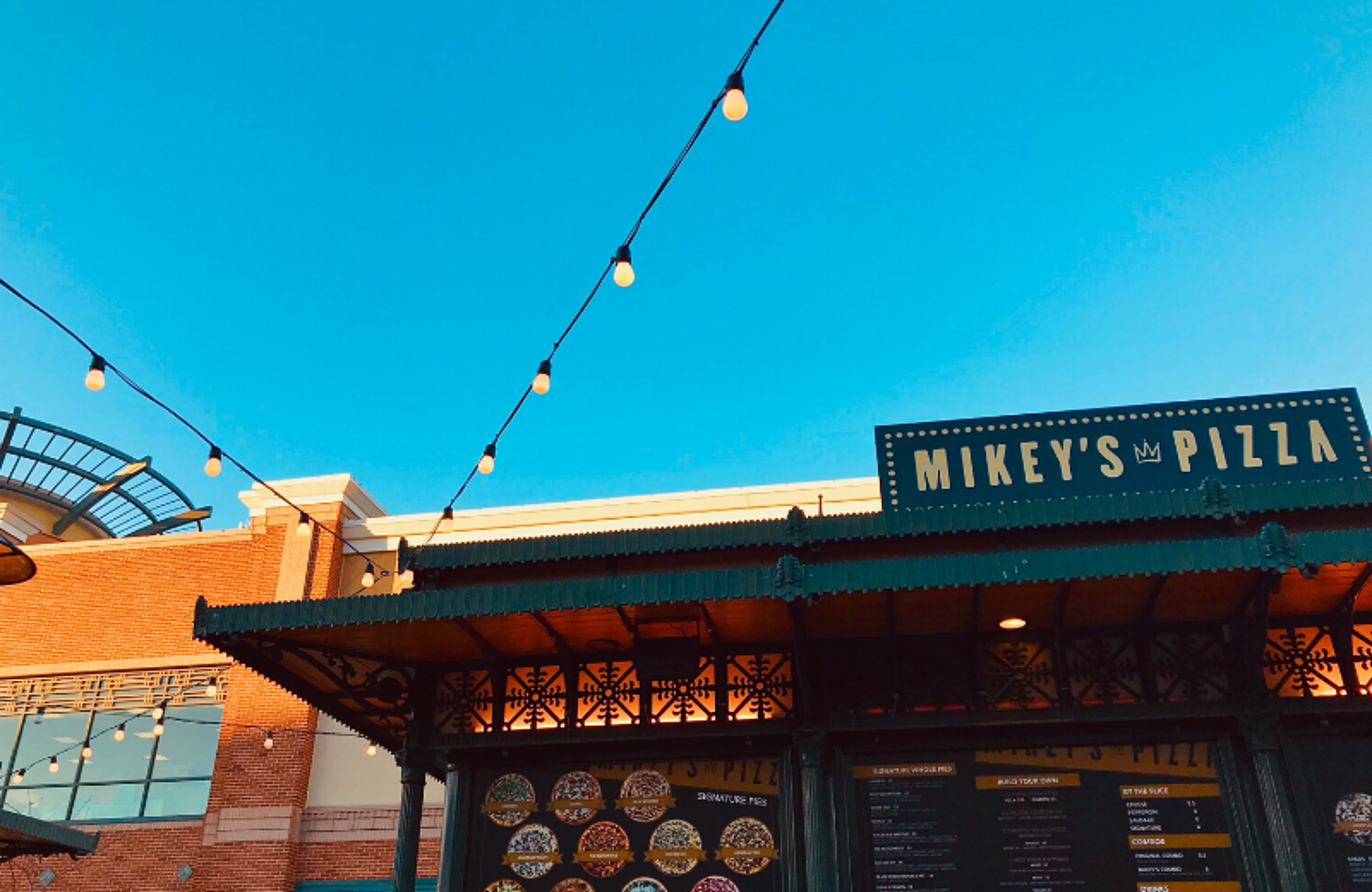How to Turn Your Menu Into a Marketing Tool

Taylor KellyAuthor
COVID-19 has ushered in a new wave of diner expectations. For restaurants, this challenging time has impacted almost every aspect of the business. And for guests, the restaurant experience has become increasingly online.
Even pre-COVID, guests had already been discovering restaurants online and on social media for over a decade now. Now more than ever, it’s essential to ensure your website is optimized. That includes highlighting your biggest marketing tool: your menu.
As the center of your business, your menu holds a lot of power. It displays the hard work of your chefs and cooks, and brings your concept to life, and when it comes down to it, it’s usually why your guests have chosen to pay a visit to your restaurant.
93% of people view online menus before dining out, according to a study by OpenTable. As the industry has shifted to accommodate a boom in off-premise dining, that number is likely to only go up - especially for guests who are ordering from you for the first time.
Online marketing for restaurants isn’t going anywhere, so make sure that you’re doing it right: with your menu at the forefront.
Restaurant Website Checklist
This template will help you update and optimize your website, so guests can easily find and order from you.

Marketing your restaurant online
There are many channels you can use when it comes to restaurant marketing – but making sure your menu is visible on your website and comes up in search engines might be the most powerful organic marketing tool you have. It sounds so simple, but for many restaurants, it might not be the first thing that comes to mind when coming up with a restaurant marketing strategy.
By posting your restaurant's menu online, you're putting your restaurant’s best foot forward by highlighting your amazing food. But there’s more to do than just upload a PDF file of your menu if you want to reach as many people as possible – restaurant menu marketing extends to your website, social media, and many other parts of your overall restaurant marketing plan.
Additionally, if your menu has changed to optimize your off-premise dining channel, this brings another opportunity to put your new menu at center stage.
How to use your menu as a marketing tool
At the end of the day, you want to make it as easy as possible for customers to know what you’re selling, and how to buy it. Here are five important steps to making your menu the strongest marketing tool it can be.
1. Make Your Menu Searchable
A lot of the time, customers don’t start their search for a place to eat with the name of a restaurant. In fact, 49% of people perform online searches without a specific business in mind.
Instead, they search for specific food items, like “Thai food Boston.” If you’re a Thai restaurant in their local area, you want to show up in those search results. If your website prominently states that you serve Thai food and are located in the city of Boston, there’ll be no problem and you’ll pop right up.
However, sometimes guests will search for a specific food item they’re craving, searching for something like “grilled cheese near me.” If you have grilled cheese on your menu, you’ll want your restaurant and your menu to appear in the search results — but if your menu is just uploaded as a PDF, you won’t.
In order for your food items to be located on search engines and review sites, your menu needs to be able to be read by a crawler.
Used by search engines, a crawler is an automated script or program that scans and analyzes the content on a webpage. Google specifically uses crawlers to "read" webpages in order to determine whether the page could be helpful to their users and whether the content on the page directly responds to one or more searches that users have made.
A PDF is basically an image on a page, and Google can’t easily crawl the image to understand the content it’s displaying.
If your menu is typed out in HTML text (which just means it’s typed out directly on a webpage on your website), it can be read by crawlers, and it’ll pop up in search.
2. Keep it Current
As a restaurant owner, you have to provide your customers with accurate information. You wouldn’t want potential guests showing up on a day when you’re closed, and the same goes for your menu. Having an old, outdated menu available online can hurt your reputation and upset customers who are disappointed that you got rid of the menu item they were excited to order — or that your prices went up.
Whenever you make a change to your menu, make sure that change is reflected wherever your menu lives — like on Facebook, Yelp, and Google My Business. Don’t leave this update for later: if you’re changing something on your menu, change it everywhere right away. If you don’t want to have to deal with this hassle, keep reading.
3. Put Your Menu On Every Online Platform
Your menu should be available on all relevant websites so that you reach the largest audience possible, and so that your restaurant is as searchable as possible.
These include
We’ve linked relevant “how to upload your menu” help articles for each site above. You’ll notice that some platforms only allow you to upload a PDF, and others only let you upload a menu through a menu management company like SinglePlatform, or through an online ordering company like GrubHub.
Getting your menu on several different platforms can be time-consuming — and it makes updating your menu even more tedious. So why bother? Because people who search for restaurants online use a lot of different methods and don’t usually land on a restaurant’s website first.
The easiest way to get your menu on different platforms in a text-based format, and to keep it automatically updated, is by working with a menu management company like SinglePlatform. Their sole purpose is to get your menu broadcast and keep it updated across all the sites that people use most when deciding where to dine out.
Having your menu be the same on every site is not only great for marketing but builds customer trust and loyalty. Plus, with someone else handling the execution for you, you have more time to focus on the guest experience, other marketing tactics, and the overall health of your business.
Here’s an example: on Facebook, Mistral Restaurant in Boston has “Menu” as an option on their navigation sidebar, and it opens a SinglePlatform-powered menu page.
.

4. Highlight Your Menu Specials on Social
If you have a limited-time special menu for a holiday or a special event, post photos of your special menu across all your social media channels. The searchability of this menu doesn’t matter as much, because it’s temporary, so you can just use a photo or a PDF.
You can also post a photo of your weekly or even daily specials on Instagram or Facebook stories, which expire after 24 hours.
Make sure you tell your followers that this menu is available for a limited time to entice them to visit soon.
If you notice that you’ve attracted a ton of new guests through this tactic, and you noticed that one of the special dishes was ordered by a big percentage of your guests, you can consider making the dish part of your normal menu.
If you make that change, announce it on social media too, with a message like “We hear you — you loved the pappardelle cacio e pepe from our Valentine’s Day menu. Thanks to your feedback, we’re adding it to our everyday menu!”
You also can use your physical menu to promote your social channels. Be sure to include your social media handles on your menu so your guests know where to find you.
5. Make Your Website (and Menu) Mobile-Friendly
When potential guests are looking for places to eat, they’re often searching while on the go. In fact, in 2018, 52.2% of all worldwide online traffic was generated through mobile phones.
Unfortunately, when you publish a webpage, it's not always automatically formatted to work across all devices (desktop/laptop computer, phone, and tablet) — and all these different systems need web pages to be constructed and coded differently. For a web page to be considered mobile-friendly, also known as “responsive,” the page needs to be designed to resize to a phone's size while keeping everything proportional.
If your website isn’t responsive, on-the-go searchers will be faced with a cramped, tiny, or poorly formatted menu, and they might choose to continue their search for dinner elsewhere.
Luckily, the most popular website-building platforms like Squarespace, Wix, and Wordpress can easily create responsive layouts for your restaurant website and webpage. Menu management companies like SinglePlatform do too.
And a side note, make sure it looks cohesive with the rest of your website design. Your restaurant website menu design doesn’t have to be anything fancy, but make sure it aligns with your brand and fits with the overall look of your site.
Bring on the New Customers
There are many ways to market your restaurant, but your menu is at the heart of why your guests keep coming back.
Your online menu — in a searchable format — should be easily discoverable by every hungry diner in your area. Integrating these tips into your marketing plan for your restaurant (and getting your menu online in the proper way!) is a simple yet effective marketing tool that can help bring new business through your doors.
And if you want to learn more about making your menu as powerful, and profit-driving, as possible, check out our free Menu Engineering course below.
Related Menu Ideas
Menu Engineering Course
Take this course to make the most of your menu. Learn about menu psychology and design, managing your menu online, and adapting your menu to increase sales.

Is this article helpful?
DISCLAIMER: This information is provided for general informational purposes only, and publication does not constitute an endorsement. Toast does not warrant the accuracy or completeness of any information, text, graphics, links, or other items contained within this content. Toast does not guarantee you will achieve any specific results if you follow any advice herein. It may be advisable for you to consult with a professional such as a lawyer, accountant, or business advisor for advice specific to your situation.



